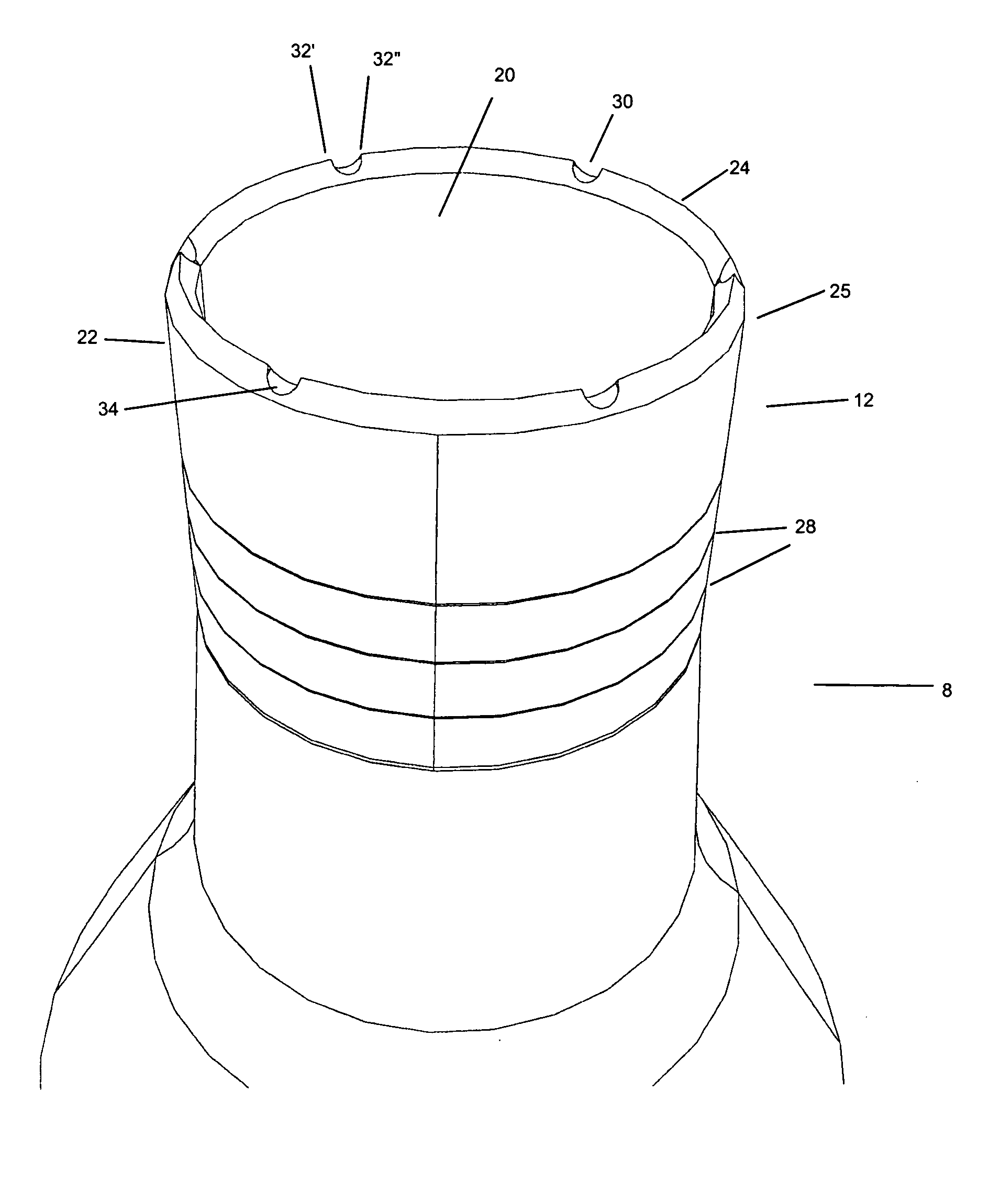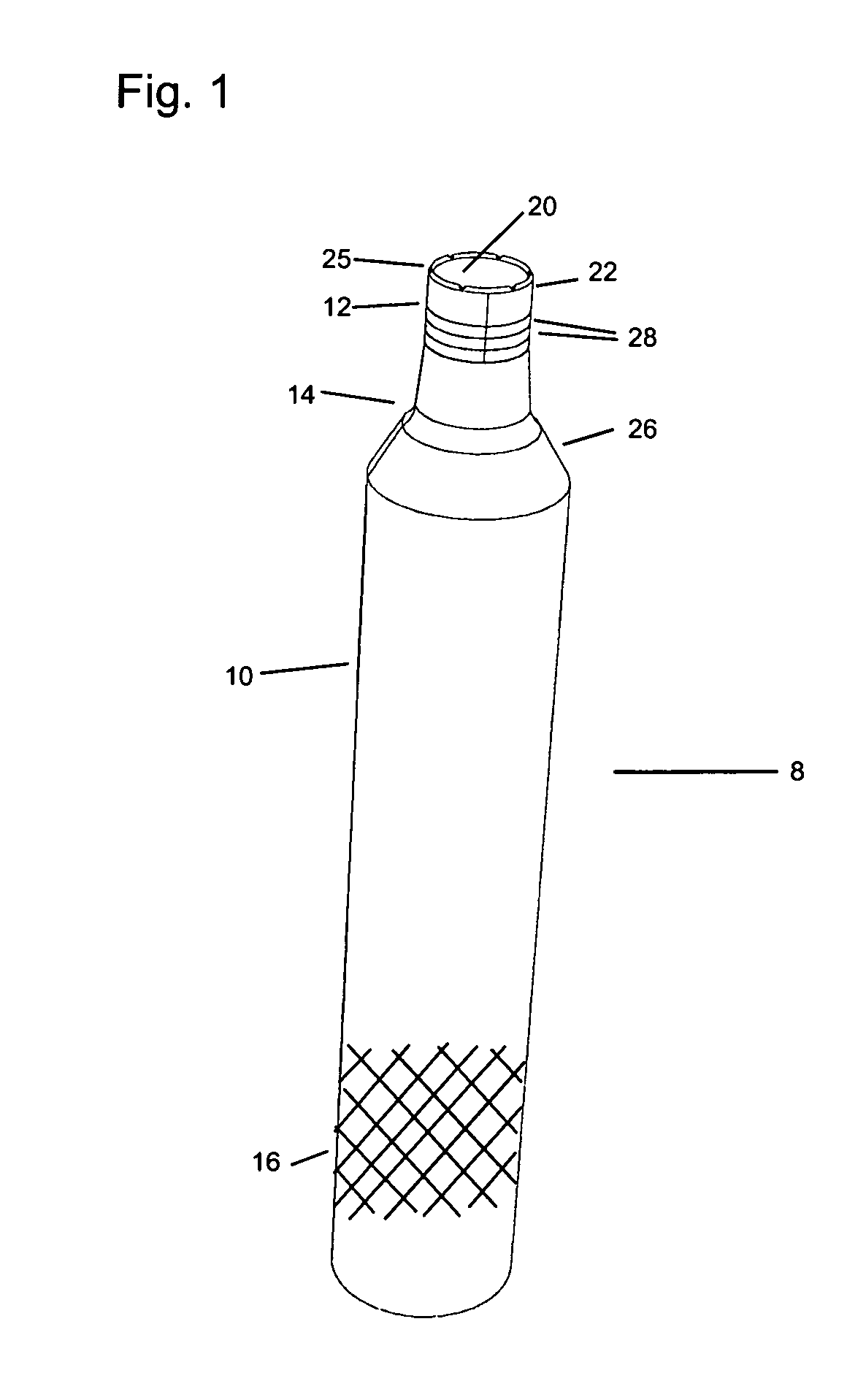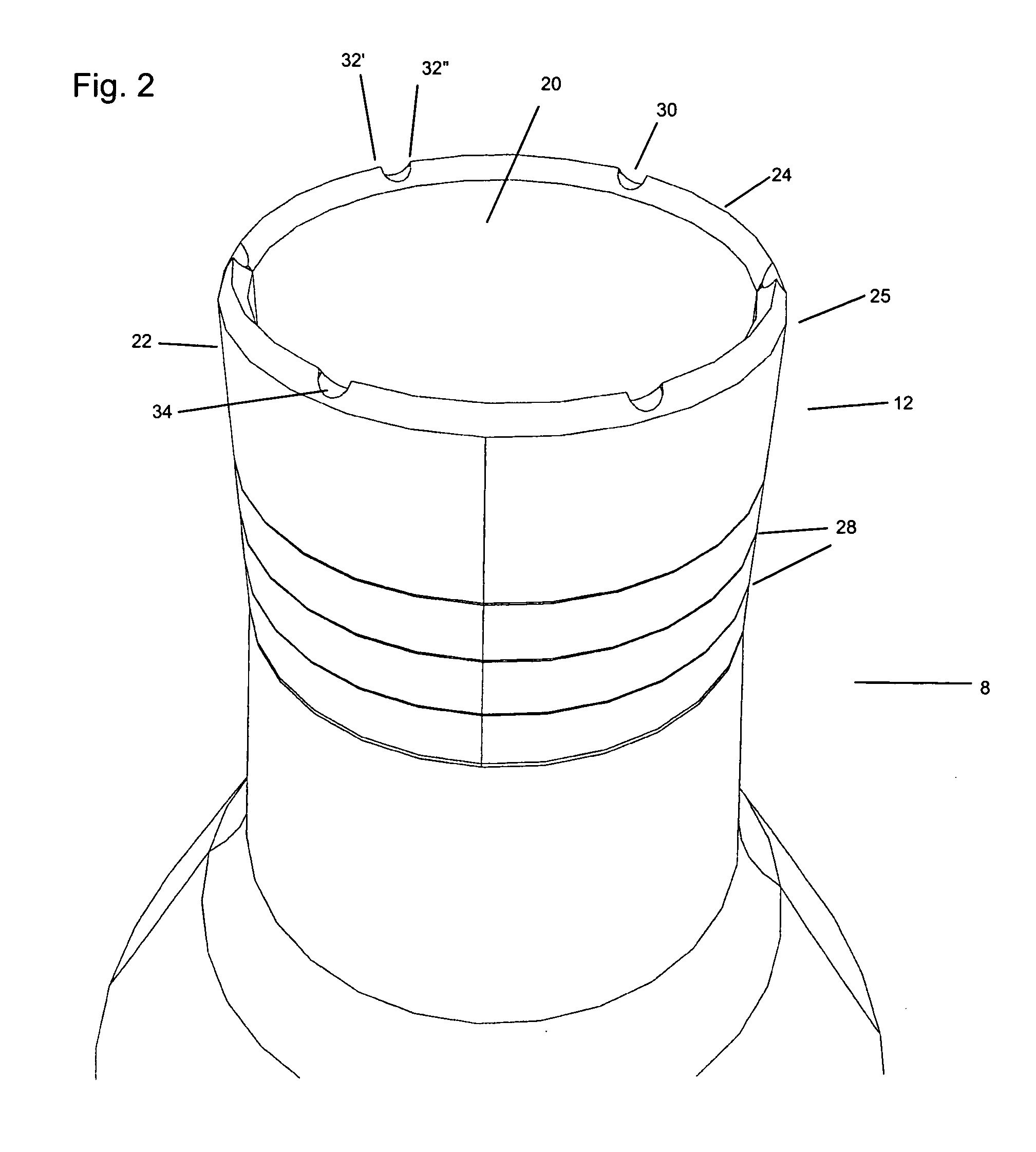Coring device for preserving living tissue
a coring device and living tissue technology, applied in the field of cartilaginous and bony tissue removal, can solve the problems of limited availability and possible damage of donor sites, devices used in such a manner are not consistent with preserving cell viability in affected tissue areas, and cannot deal with large and deep osteochondral defects
- Summary
- Abstract
- Description
- Claims
- Application Information
AI Technical Summary
Benefits of technology
Problems solved by technology
Method used
Image
Examples
Embodiment Construction
[0029] The present invention provides devices and methods for coring tissue of exact dimensions, wherein the viability of the cells in the tissue is substantially preserved. It has surprisingly been found that to facilitate effective integration of an implanted osteochondral core plug, not only must the osteochondral cell viability of the core plug material be preserved, but further the osteochondral cell viability of the surrounding tissue ought to also be preserved. In this manner, a plug of living material is able to be integrated into a surrounding area of living material. The present invention utilizes low speed, low impact techniques to neatly slice through soft tissue, such as cartilage, dividing the soft tissue with a cutting element having a sharpened level cutting edge surface, and preserving the viability of soft tissue cells. The present invention is also capable of cutting into to rigid tissue, such as bone, as the cutting element also features a plurality of serrations...
PUM
 Login to View More
Login to View More Abstract
Description
Claims
Application Information
 Login to View More
Login to View More - R&D
- Intellectual Property
- Life Sciences
- Materials
- Tech Scout
- Unparalleled Data Quality
- Higher Quality Content
- 60% Fewer Hallucinations
Browse by: Latest US Patents, China's latest patents, Technical Efficacy Thesaurus, Application Domain, Technology Topic, Popular Technical Reports.
© 2025 PatSnap. All rights reserved.Legal|Privacy policy|Modern Slavery Act Transparency Statement|Sitemap|About US| Contact US: help@patsnap.com



